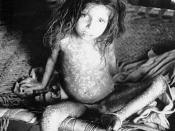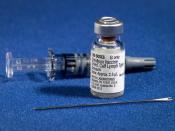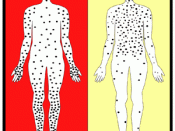Smallpox is a very serious infectious virus. It has about a 30% fatality rate. There is no treatment other than a vaccine that wears off in approximately 5 years. There are two types that have effects on humans. Variola Major and Variola Minor. Variola Major is more common and more lethal. Smallpox has been eradicated except in two labs; one in Russia and one in the United States. Smallpox comes from a variola virus that emerged in humans thousands of years ago. Right now our government is concerned that it could be used for bio-terrorism. Smallpox is generally transferred by face-to-face contact, but there have been instances when it was transferred through the air.
Smallpox's incubation period is 7-14 days, and is not contagious during this time. The initial symptoms happen between 9-18 days after being infected, and the virus is sometimes contagious. 4 days after the initial symptoms the virus is most contagious in what is called the early rash.
The pustular rash happens 5 days after the early rash, and the virus is contagious. Approximately 5 days later the victim develops pustules and scabs, and is contagious. The resolving scabs come up five days after that, and the virus is still contagious. Following that the virus ends if the victim hasn't died, in a period called scabs resolved, the victim is no longer contagious.
Anthrax is a disease that is most common in agricultural areas. It commonly occurs in sheep, cattle, goats, camels, antelopes and other herbivores. Workers exposed to dead animals and their products can get anthrax. Anthrax has naturally occurred in the United States. Anthrax can be spread from undercooked meat, and from the ground. It is rare in the United States. Lesson: don't kill animals, or eat meat!
Anthrax symptoms resemble a common...


